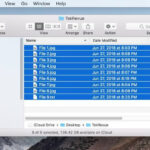Encountering problems with your laptop camera when you need to take a photo can be frustrating. Whether it’s for a quick snapshot, a video call, or recording memories, a functioning camera is essential. If your laptop camera isn’t working as expected, don’t worry. Often, the fix is simpler than you might think. This guide will walk you through some easy steps to troubleshoot and get your laptop camera working again so you can capture those important moments.
Simple First Steps to Get Your Camera Working
Before diving into more technical solutions, try these quick and easy fixes. These are often the most effective for resolving minor camera glitches:
-
Disconnect and Reconnect: Just like with many electronic devices, sometimes a simple reset is all that’s needed. If you are using an external webcam, unplug it from your laptop’s USB port and then plug it back in. This can refresh the connection and resolve temporary communication issues.
-
Close and Restart the Application: The problem might not be with your camera itself, but with the application you’re trying to use it with. Completely close the application that is accessing your camera. Make sure it’s not just minimized but fully closed. Then, reopen the application and try using your camera again. This can resolve software conflicts or glitches that might be preventing the camera from functioning correctly.
Updating Camera Drivers for Optimal Performance
If the basic steps don’t solve the problem, the issue might be related to your camera drivers. Drivers are software that allow your operating system to communicate with your camera hardware. Outdated or corrupted drivers can lead to camera malfunctions. You have two main options for updating your drivers: using the manufacturer’s drivers or using the default drivers provided by Windows.
Option 1: Install Driver Updates from the Camera Manufacturer
For the most specific and potentially optimized drivers, it’s best to get them directly from the camera manufacturer (especially relevant for external webcams). However, for integrated laptop cameras, you might need to visit your laptop manufacturer’s website for driver updates.
- Open Device Manager: Click on the Start Menu (Windows icon), type “Device Manager”, and select Device Manager from the results.
- Expand Imaging devices: In the Device Manager window, find and expand the category labeled Imaging devices. This will list cameras connected to your laptop.
- Update Driver Software: Right-click on your camera (it might be listed as “Integrated Webcam” or the specific model name) and select Update Driver Software….
- Automatic Search: Choose Search automatically for updated driver software. Windows will then search your computer and the internet for the latest drivers for your camera. Follow any on-screen instructions, which may include restarting your computer to complete the installation.
Option 2: Install PC Default Drivers
If updating to the latest manufacturer drivers doesn’t work, or if you encounter issues during that process, using the default, generic USB video drivers that come with Windows can sometimes be a more stable solution.
- Open Device Manager: Again, open Device Manager by searching for it in the Start Menu.
- Expand Imaging devices: Locate and expand the Imaging devices category.
- Update Driver Software: Right-click on your problematic camera and select Update Driver Software….
- Browse My Computer: This time, select Browse my computer for driver software.
- Let Me Pick: Choose Let me pick from a list of device drivers on my computer.
- Select USB Video Device: In the list that appears, find and select USB Video Device. Click Next to proceed. Windows will install these generic drivers. Restart your computer if prompted.
Tips for Taking Better Photos with Your Laptop Camera
Once your camera is working smoothly, you can focus on taking better photos. While laptop cameras are not professional photography tools, you can still achieve decent results with a few simple considerations:
- Lighting is Key: Good lighting is crucial for any photo. Ensure you have adequate light facing you. Natural light from a window is often the most flattering. Avoid having bright light sources behind you, as this can make you appear dark and silhouetted.
- Clean Your Lens: A smudged or dirty camera lens will result in blurry or unclear photos. Gently clean your laptop camera lens with a soft, microfiber cloth, similar to what you would use to clean eyeglasses.
- Consider Your Background: Think about what’s behind you. A cluttered or distracting background can take away from your photo. Opt for a clean and simple background, or one that adds context and interest without being overwhelming.
- Maintain Eye Contact (For Video Calls and Selfies): When taking a photo or on a video call, try to look directly at the camera lens, rather than at the screen. This creates better eye contact and makes your photos and video calls more engaging.
By following these troubleshooting steps and photo-taking tips, you should be able to resolve most common laptop camera issues and start taking photos with confidence. If you continue to experience problems, more specific hardware or software issues might be at play, and seeking further technical support may be necessary.
